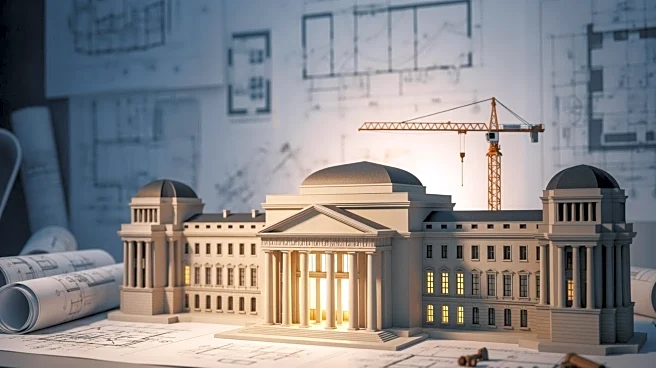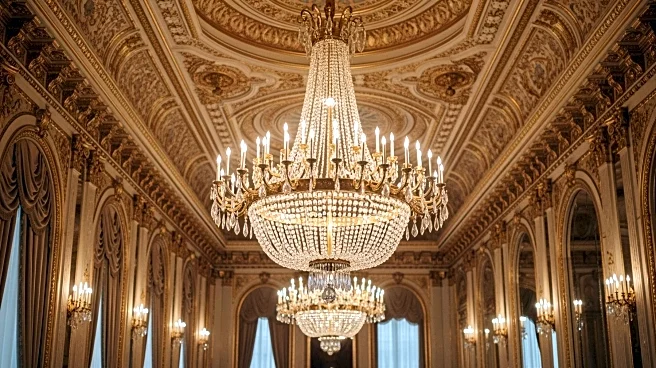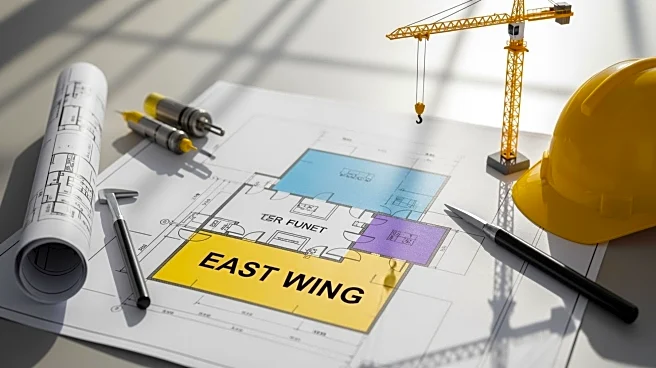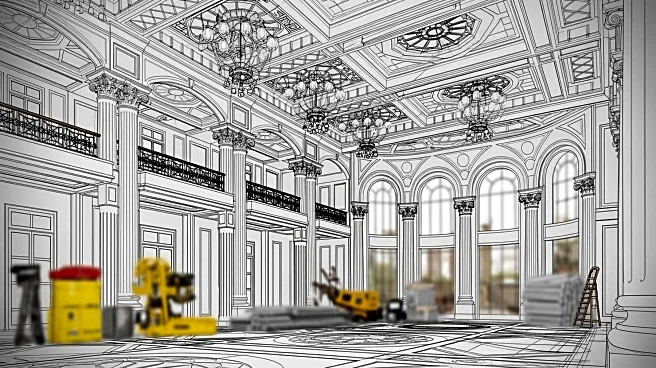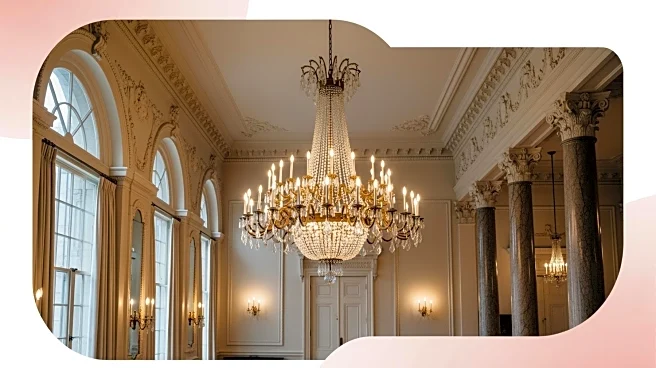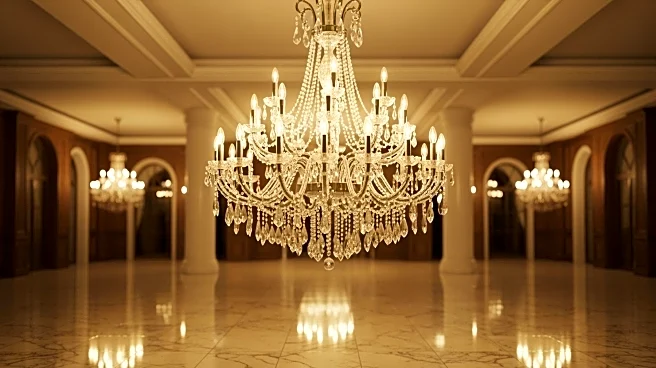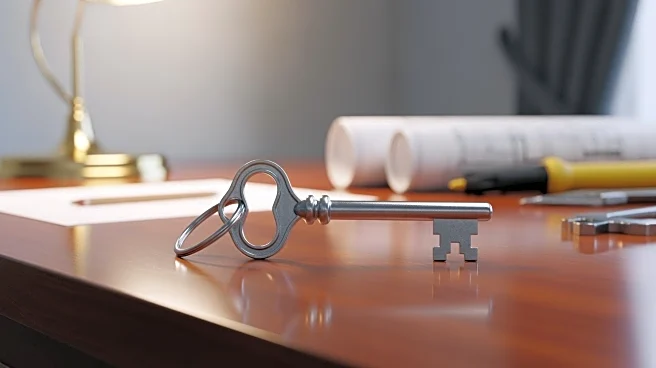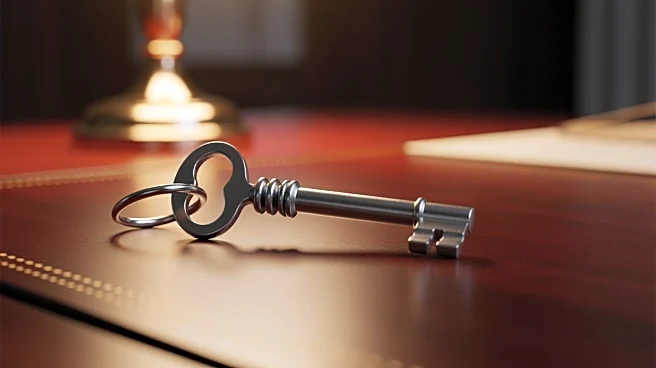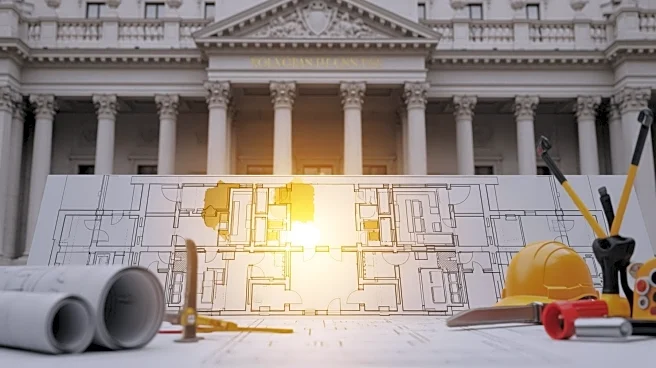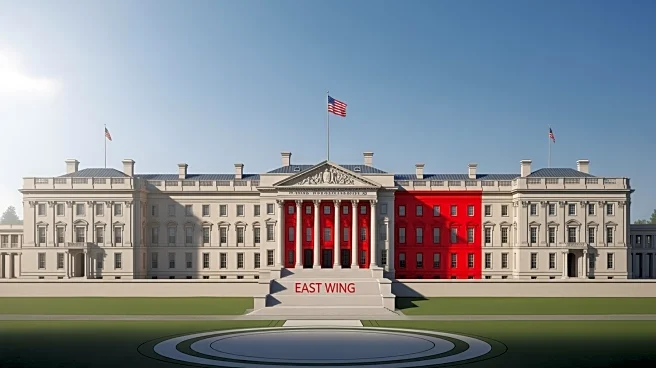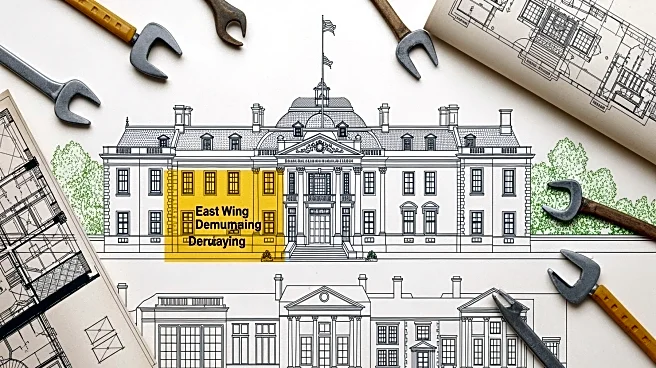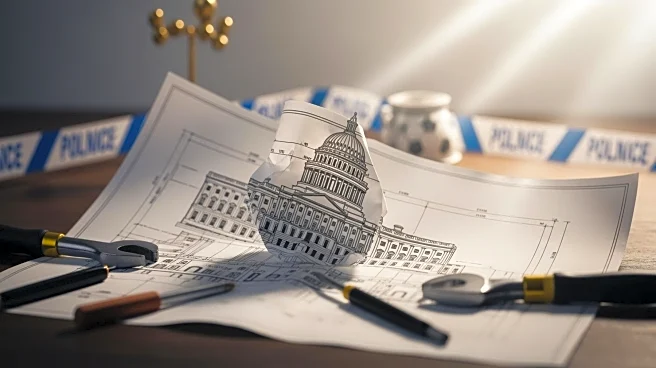What's Happening?
The White House is undergoing significant changes with the addition of a new ballroom, which has raised concerns among historians. Presidential historian Mark Updegrove has expressed that President Trump is attempting to reshape the White House to reflect
his personal image. This development is part of broader renovations that have sparked debate over the historical integrity of the presidential residence. The new ballroom is expected to be a grand addition, but it has also led to discussions about the potential overwhelming impact on the traditional structure and function of the White House.
Why It's Important?
The expansion of the White House with a new ballroom signifies a shift in how presidential spaces are utilized and perceived. This change could influence future administrations in terms of how they approach the preservation of historical sites versus modernization. The decision to add such a feature may also reflect broader political and cultural shifts, emphasizing personal branding over historical preservation. Stakeholders in historical preservation and political circles may view this as a precedent-setting move, potentially affecting public policy regarding national heritage sites.
What's Next?
As the renovations continue, there may be further discussions and debates among historians, political leaders, and the public about the balance between modernization and preservation. The completion of the ballroom could lead to increased scrutiny of how the White House is used for official functions and events. Future administrations may face pressure to either continue modernizing or revert to traditional designs, impacting how presidential spaces are managed.
Beyond the Headlines
The addition of the ballroom could have deeper implications for the cultural and historical identity of the White House. It raises questions about the role of personal influence in shaping national symbols and the potential loss of historical authenticity. This development might also reflect broader societal trends towards personalization and branding in political spaces.
